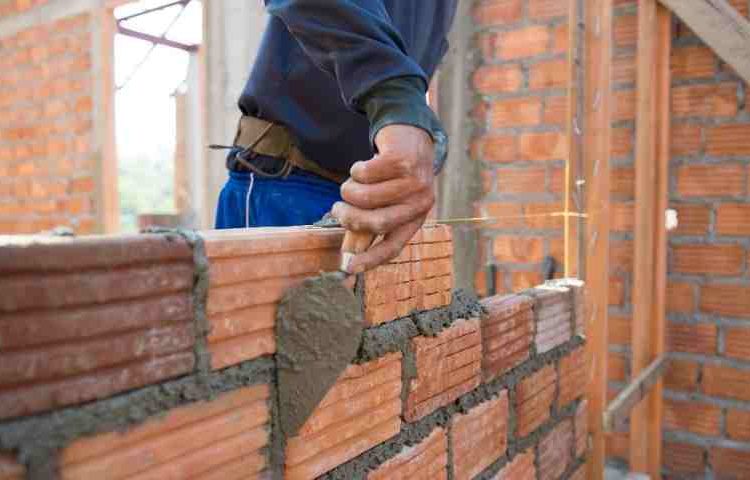The field of civil engineering is broad, complex, and home to many subspecialties. Public works planning and construction are among the most crucial. Civil engineers are in charge of making sure that the infrastructure of modern society is safe and effective, including roads, bridges, canals, and dams.
Civil engineers must also think ahead when creating long-term projects like airports and railroads. Finally, it is their responsibility to ensure that already-built buildings are robust and able to withstand usage.
As the population continues to grow and the consequences of climate change continue to confront us with new problems, civil engineering will become more important.
Building materials, bridge materials, road materials, etc. are all examples of construction materials. You can use either natural or synthetic materials for this purpose.
- Concrete
The amount of water added to the mix determines the strength of the concrete; more water results in a block of weaker concrete, while less water results in a block of stronger concrete. In order to achieve optimal strength, concrete must be properly cured, or left to dry slowly over time. Concrete that has been properly cured is an extremely strong and resilient material, making it excellent for building tasks. Concrete that dries too quickly will be weaker and may crack or crumble. When cement and water mix, a chemical reaction occurs that dries the concrete and bonds the aggregates together.
- Asphalt
Bitumen (a kind of petroleum product) and aggregate are combined to create asphalt, a building material (gravel, sand, or crushed stone). Asphalt is often used in the building of roadways and parking lots because of its durability and weather resistance.
- Steel
Steel is a construction material that has a long history of use in a wide variety of applications. Its strength, durability, and versatility make it an ideal choice for everything from bridges and skyscrapers to tools and appliances. Steel is made from iron ore that has been purified and cast into shapes such as beams, bars, or sheets. The process of manufacturing steel is relatively energy-intensive, but the end product is worth the effort. Steel is one of the strongest construction materials available and can withstand high loads and extreme temperatures. It is also resistant to fire and pests, making it an ideal choice for both commercial and residential construction. With so many benefits, it is no wonder that steel remains a popular choice for builders and engineers around the world.
- Wood
Wood is one of the most popular construction materials in the world, and it has been used for centuries. Trees are cut down and the lumber is processed into boards of various sizes. These boards can be used to build homes, furniture, and a variety of other objects. Wood is valued for its beauty, versatility, and strength. It is also relatively easy to work with, making it a popular choice for both amateur and professional builders alike. While wood does have some disadvantages—such as its potential to rot or be damaged by insects—these can be mitigated through proper treatment and maintenance. Overall, wood remains an excellent choice for a wide range of construction projects.
- Masonry
Bricks, stones, or concrete blocks put in mortar are used to create masonry, a building material. Because of its durability, masonry is often utilized in the building of walls and foundations. Both load-bearing and non-load-bearing masonry walls are possible. Non-load-bearing masonry walls do little more than demarcate space; load-bearing masonry walls carry the weight of the building above them. Masonry is a tried-and-true building material that is still used in a number of applications.
- Glass
Glass is a material that has been used in construction for centuries. It is made by melting silica sand, soda ash, and limestone at high temperatures. The molten mixture is then cooled and formed into sheets. Glass can be clear or tinted, and it can be used in a number of ways in construction. It is frequently used in windows and doors, and it can also be used to create skylights, partitions, and other architectural features. Glass is valued for its beauty and its ability to let in natural light. It can also be recycled, making it a sustainable choice for builders who are interested in green construction.
- Plastics
Plastics are synthetic materials that are manufactured from a range of resources, such as petroleum products, natural gas, and coal. They are very adaptable building materials that may be shaped into a broad range of forms and sizes. In many applications, wood or metal are often replaced with plastic. In the plumbing industry, for instance, plastic pipes are widely utilized because they corrode less quickly than metal pipes. Additionally, gutters, downspouts, and other construction parts may be made of plastic. Builders have started using recycled plastic in recent years in an attempt to produce more environmentally friendly building projects.
There is a multitude of building materials accessible on the market nowadays. Each substance has a unique set of advantages and disadvantages of its own. Whether you’re excavating a foundation for a new home or clearing land for a new road, a backhoe loader can get the job done quickly and efficiently.
To guarantee that your project is properly finished, it is crucial to choose the appropriate material. The choice of building material will ultimately depend on a variety of aspects, including cost, durability, and aesthetics.

